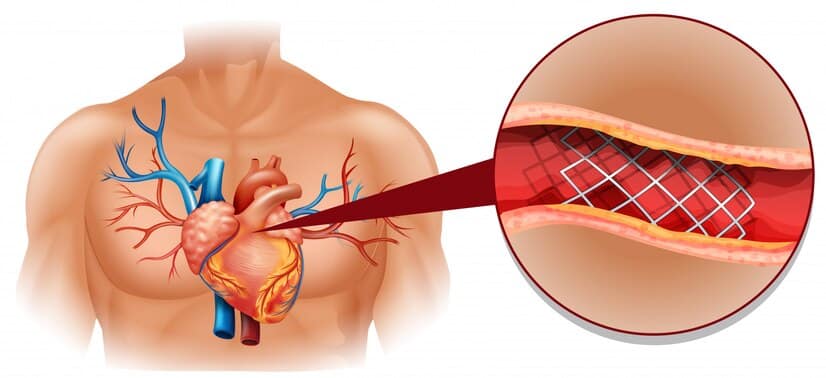
Menu

In the dynamic world of healthcare, precise coding is essential for accurate diagnosis, efficient record-keeping, and proper billing. When it comes to dyslipidemia, a condition related to cholesterol levels, understanding the right ICD-10 code is pivotal.
This comprehensive guide aims to illuminate the ICD-10 code for dyslipidemia and the corresponding hyperlipidemia ICD-10 code, making it easier for healthcare professionals, medical coders, and anyone interested in this field to navigate the intricacies of medical coding.
Before we delve into the ICD-10 codes, let’s establish a solid foundation by understanding dyslipidemia. This condition, often referred to as high cholesterol, involves an abnormal level of lipids (fats) in the blood. Dyslipidemia is a significant risk factor for heart disease, stroke, and other cardiovascular issues. It’s crucial for healthcare providers to accurately code and documents this condition to ensure that patients receive the right care and insurance claims are processed correctly.
Hyperlipidemia, often referred to as high lipid levels or high cholesterol, is a medical condition characterized by an abnormal elevation of lipids (fats) in the bloodstream.
Risk Factors: Hyperlipidemia is influenced by various factors, including genetics, diet, lifestyle, and other underlying health conditions.
Types of Lipids: Hyperlipidemia encompasses different lipid types, including cholesterol and triglycerides, and can manifest in various forms, such as hypercholesterolemia (high cholesterol) or hypertriglyceridemia (high triglycerides).
ICD-10 Codes: Hyperlipidemia is classified under the ICD-10 coding system. The primary ICD-10 code for hyperlipidemia is E78, which can be further specified based on the type of hyperlipidemia.
Sub codes for Hyperlipidemia: More specific ICD-10 codes for hyperlipidemia include:
E78.0 – Pure hypercholesterolemia
E78.1 – Pure hypertriglyceridemia
E78.2 – Mixed hyperlipidemia
E78.3 – Hyperchylomicronemia
E78.4 – Other hyperlipidemia
Clinical Significance: Hyperlipidemia is a significant risk factor for cardiovascular diseases, such as atherosclerosis, heart attack, and stroke. Proper diagnosis and management are critical to reduce these risks.
Diagnosis: Healthcare professionals typically use blood tests to diagnose hyperlipidemia, measuring levels of total cholesterol, LDL (low-density lipoprotein), HDL (high-density lipoprotein), and triglycerides.
Treatment: Management of hyperlipidemia often involves lifestyle changes, such as a heart-healthy diet, regular exercise, and, in some cases, medication.
Prevention: Preventing hyperlipidemia involves a healthy lifestyle, including a balanced diet, regular physical activity, and avoiding tobacco use.
Regular Screening: Regular screenings are recommended to detect and manage hyperlipidemia early, especially in individuals with risk factors or a family history of the condition.
ICD Codes in Healthcare: Proper ICD-10 coding is crucial for documenting and managing hyperlipidemia in healthcare settings, ensuring accurate diagnosis and billing.
Both hyperlipidemia and dyslipidemia refer to abnormal levels of lipids (fats) in the bloodstream. However, they are used to describe slightly different aspects of lipid disorders.
Hyperlipidemia: Hyperlipidemia is a broader term used to describe elevated levels of lipids in the blood, which can include elevated cholesterol levels (hypercholesterolemia) and elevated triglyceride levels (hypertriglyceridemia).
Dyslipidemia: Dyslipidemia, on the other hand, is a more specific term that refers to any abnormal lipid levels in the blood. It encompasses both high cholesterol and high triglycerides, making it a more comprehensive term for lipid disorders.
ICD Codes: In the ICD-10 coding system, dyslipidemia and hyperlipidemia share the same primary code, which is E78. However, the specific sub codes under E78 help to differentiate between various lipid disorders, such as hypercholesterolemia, hypertriglyceridemia, and mixed hyperlipidemia.
Clinical Significance: Both hyperlipidemia and dyslipidemia are significant risk factors for cardiovascular diseases, including atherosclerosis, heart attack, and stroke. Proper diagnosis and management are crucial to reduce these risks.
Treatment: The treatment and management of hyperlipidemia and dyslipidemia are similar and often involve lifestyle changes, including adopting a heart-healthy diet, engaging in regular exercise, and, in some cases, taking medication.
ICD Codes in Healthcare: Accurate ICD-10 coding is essential for documenting and managing both hyperlipidemia and dyslipidemia in healthcare settings, ensuring that the patient’s lipid disorder is properly recorded and addressed.
The ICD-10 code for hyperlipidemia is E78. This code serves as the primary code for all forms of hyperlipidemia. However, it’s essential to use more specific sub codes under E78 to accurately represent the type of hyperlipidemia the patient has. These subcodes provide a detailed diagnosis within the hyperlipidemia spectrum, such as hypercholesterolemia, hypertriglyceridemia, and mixed hyperlipidemia, among others.
No, you do not always need to report the E78.5 diagnosis code for hyperlipidemia. E78.5 is a sub code that specifically corresponds to “hyperlipidemia, unspecified.” This code is used when the healthcare provider cannot determine the specific type of hyperlipidemia or when the condition does not fit into a more precise subcategory under E78. It’s important to report the sub code that best describes the patient’s condition, such as hypercholesterolemia (E78.0), hypertriglyceridemia (E78.1), or another applicable sub code based on the clinical assessment.
Hyperlipidemia and high cholesterol are related terms but not precisely the same.
Hyperlipidemia: This term refers to the presence of abnormal lipid (fat) levels in the bloodstream. It can encompass high levels of cholesterol, high levels of triglycerides, or a combination of both. Hyperlipidemia is a broader term that covers various lipid disorders.
High Cholesterol: High cholesterol, often referred to as hypercholesterolemia, specifically relates to elevated levels of cholesterol in the blood. While high cholesterol is a form of hyperlipidemia, hyperlipidemia encompasses a wider range of lipid abnormalities beyond just high cholesterol levels.
ICD-10 Code: E78.1
Hypertriglyceridemia involves elevated levels of triglycerides in the bloodstream. High triglycerides can increase the risk of pancreatitis and cardiovascular issues.
Mixed Hyperlipidemia:
ICD-10 Code: E78.2
Mixed hyperlipidemia is a combination of high LDL cholesterol and high triglycerides, making it a complex lipid disorder that can significantly impact cardiovascular health.
Hyperchylomicronemia (Chylomicronemia):
ICD-10 Code: E78.3
This rare lipid disorder is characterized by extremely high levels of chylomicrons, a type of lipoprotein. It can lead to acute pancreatitis and other health complications.
Other Hyperlipidemia:
ICD-10 Code: E78.4
This code is used for hyperlipidemia that doesn’t fall into the specific categories mentioned above. It’s typically used when the type of hyperlipidemia is not clearly defined.
Hyperlipidemia, Unspecified:
ICD-10 Code: E78.5
This code is used when the specific type of hyperlipidemia cannot be determined or when it doesn’t fit into the more precise subcategories.
Specificity in Diagnosis: Ensure that the ICD-10 code selected accurately reflects the specific type of hyperlipidemia the patient has, such as hypercholesterolemia (high LDL cholesterol), hypertriglyceridemia (high triglycerides), or mixed hyperlipidemia.
Documentation: Thoroughly document the patient’s medical history and clinical findings. This information is crucial for determining the correct code and assessing the severity and risk factors associated with the condition.
Code Selection: Use the primary code E78 to designate hyperlipidemia.
Utilize sub codes to provide more detailed information about the type of hyperlipidemia:
Primary Diagnosis: In most cases, hyperlipidemia is coded as a primary diagnosis, especially when it’s the reason for the patient’s visit or a significant health concern. However, it can also be a secondary diagnosis when it is not the primary reason for the patient’s visit but is still relevant to their overall health.
Coding for Complications: If hyperlipidemia leads to complications, such as atherosclerosis, coronary artery disease, or pancreatitis, be sure to code the complication as well, following the appropriate ICD-10 guidelines for those conditions.
Regular Updates: Keep ICD-10 coding knowledge up-to-date, as codes and guidelines may change over time. Staying current ensures accurate coding practices.
Collaboration: Collaborate with healthcare providers and medical coders to ensure accurate and consistent coding, as well as to address any coding-related queries or challenges.
Use of Unspecified Codes: While it’s essential to be as specific as possible, there may be situations where the exact type of hyperlipidemia cannot be determined. In such cases, the use of the unspecified code E78.5 is appropriate.
In the realm of healthcare, precision is paramount, and this extends to medical coding. Understanding the ICD-10 code for dyslipidemia, as well as its sub codes, is essential for healthcare professionals. Similarly, knowing the appropriate code for hyperlipidemia is crucial to document this condition accurately.
We hope this comprehensive guide has clarified the ICD-10 coding for dyslipidemia and hyperlipidemia, making the healthcare journey smoother for both providers and patients. Proper coding is not just about numbers and letters; it’s about delivering the right care and maintaining accurate records in the ever-evolving landscape of healthcare.
Stay tuned for more insights into the world of medical coding and healthcare management. If you have any questions or need further information, don’t hesitate to reach out.



